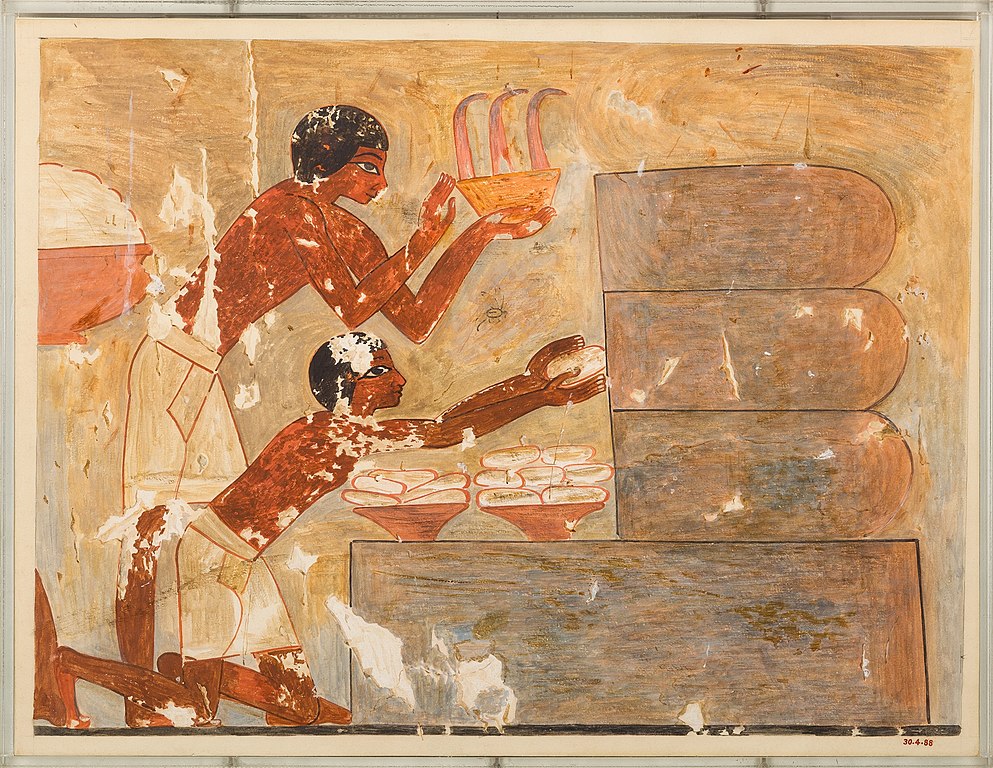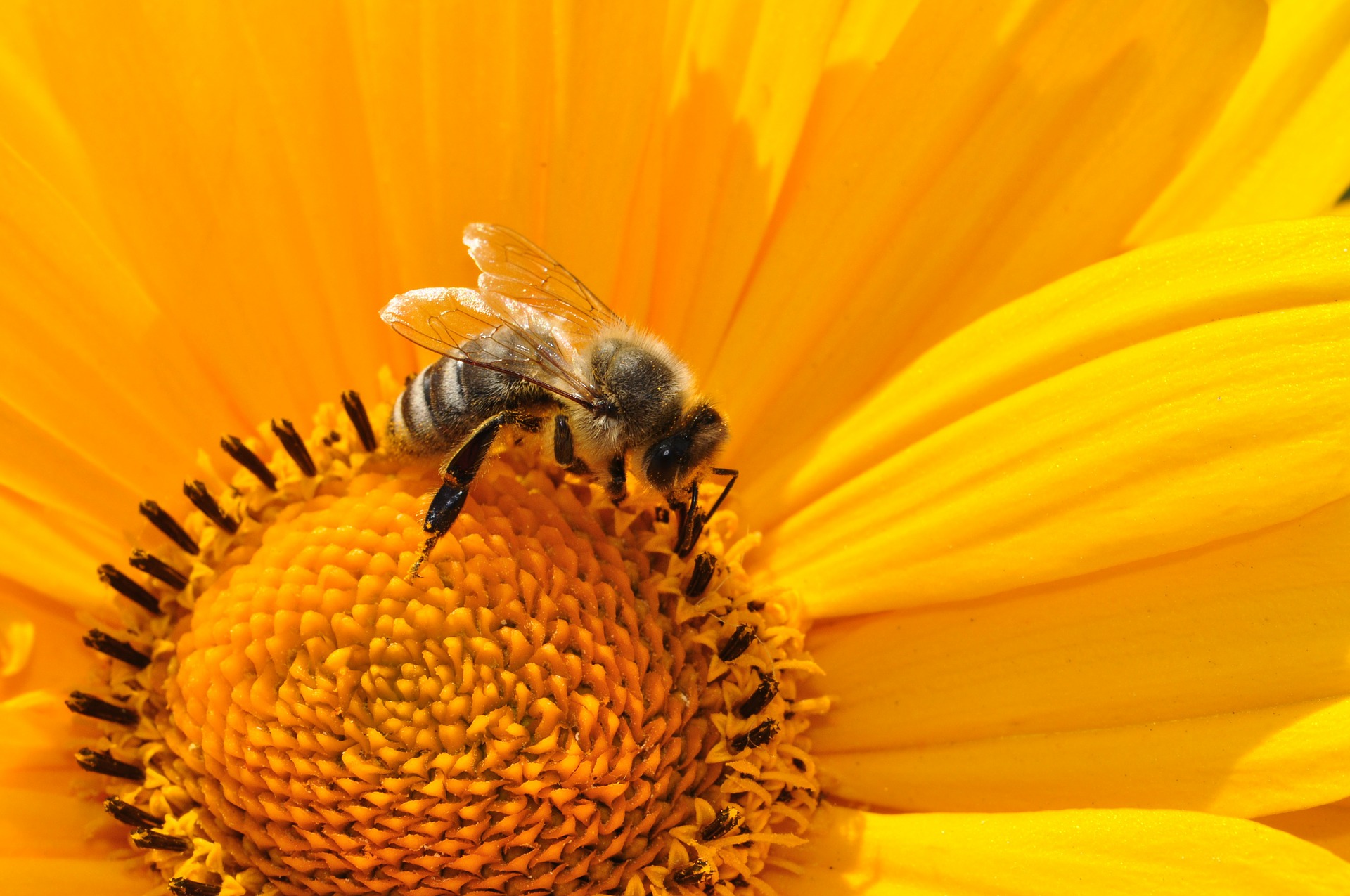Bees have been an ally to humankind since ancient times. Discover how even now we look to the wisdom of bees to help us.
On May 22nd 2017, a man walked into an Ariana Grande concert at Manchester Arena and detonated a bomb, killing 22 people. The senseless loss of life left both the city and country in shock, a pain that is all too fresh two years on.
Almost immediately, heartbroken Mancunians looked for a symbol of resistance, resilience of community, which they found in the humble worker bee. Local tattoo parlours were inundated with people wanting to have the bee, the symbol of Manchester’s industrial heritage, inked onto their bodies in an effort to raise money for those most affected by the atrocity. In the wake of violence, humanity rallied around a creature that has been an integral part of our lives for centuries, an insect that has shaped the world we live in.

“He hath united the two lands. He hath joined the Reed to the Bee.”
This declaration was written on papyrus in around 3500 BC to announce the joining of Upper and Lower Egypt under a single ruler. The ancient Egyptians were serious about their bees and hieroglyphics have been found depicting the common bee-keeping practice of ‘smoking’ the hive before filling, pressing and sealing honey. All classes had need for honey as a sweetener,and the rich amber liquid was even baked into marriage laws, with marital contracts stating that the husband promises to deliver his wife twelve jars of honey per year. Bees were not just relied on for their honey production, as beeswax was used for both practical and magical means. Sorcerers would shape the beeswax into figures, sometimes crafted into human form so that if the figure were harmed, the victim would also feel pain. Sympathetic magic powered by insects. The wax was also used to make candles, waterproof clothing and as a surface on which to write. Very early on, humanity understood how integral bees were to their own progress.

For this reason, the bee became a holy symbol throughout the world’s cultures and was woven into their pantheons. In Hinduism, Krishna, the god of compassion and love, and Vishnu, god of protection and preservation of good, are both related to the blue bee. Each has blue skin, while Vishnu is represented by a blue bee on a lotus flower. In Greek mythology, bees are linked with nymphs, woodland spirits who would reside in caves with wild bees, acting as bee-keepers to the gods. Even at the birth of Zeus in Crete, bees were said to be his nurses, caring for him in his cave.
Many believe the Celts had the greatest veneration of bees. It’s said that they were believed to be messengers who could travel between the mortal realm and the Otherworld, transporting souls between the two places. They carried a great wisdom and knowledge of many things, which can be evidenced in the Scottish saying: ‘ask the wild bee for what the druid knew’. So integral bees were to Irish tradition, clans even set a series of laws called Bech Bretha, the Bee Judgements, which protected bees and bee-keepers from criminal acts such as hive theft.
“They are deeply magical beings…holy beings.” This is Natasha ‘Tash’ Kindred, an apprentice bee-keeper. She explains how bees resonate with her spiritually, offering an insight into why humanity has included bees in their cultural belief systems all over the world. “I wonder if it’s something to do with the absolute harmony of their community. You can see why they were so precious to monasteries and convents and a reflection of those communities. Not one being is wasted or obsolete, each one works in smooth perfection with the others…and together they produce something unutterably precious.” While Tash is quick to mention that she doesn’t believe that bees are intrinsically Christian, they do resonate with her own faith in a deeply spiritual way.
Like many other belief systems, Christianity does have its fair share of bee stories. Many believe that bees came directly from the Garden of Eden, giving them a direct link to God. In Cornwall, it is said that the best time to move a hive is on Good Friday, for the bees are so preoccupied with mourning the crucifixion of Christ, while in Bedfordshire an ailing hive could be perked up with a psalm reading. In Northumberland on Christmas Eve, the bees are said to hum a hymn to celebrate the birth of Jesus.
“From a folkloric perspective, many old traditions are alive and well in modern bee-keeping,” Tash says. In folklore, bees are fiercely loyal to their owners and their family and must be kept abreast of important family news, particularly when it comes to death. The punishment for not sharing such tidings could be that the swarm dies of grief, or simply flies away. Bees are also easy to offend, so one must talk politely when around a hive, and never treat them a as a mere commodity when buying or selling hives — this will undoubtedly upset them.
It’s no wonder that the symbol of the bee resonates so strongly with us and that, when mourning a national travesty we turn to the creature as an emblem of strength. And while Manchester’s bee is a representation of the industrial revolution, the tide of history has shown it to be a loyal friend to humanity, one that nurtured its gods, gave us wisdom, and grieved for us. Perhaps, each May 22nd, the bees will stop for a moment to remember those we lost on that fateful day, and we will all join them — humanity and the bees as one.
References & Further Reading
Fez Baker, 2018, Bees in History, Religion and Lore, Self-published
Dee Dee Chainey, 2018, A Treasury of British Folklore: Maypoles, Mandrakes & Mistletoe, National Trust
Venetia Newall, 2011, Discovering the Folklore of Birds and Beasts, Shire Classics
Hilda M. Ransome, 1937, The Sacred Bee in Ancient Times and Folklore, Dover Books


